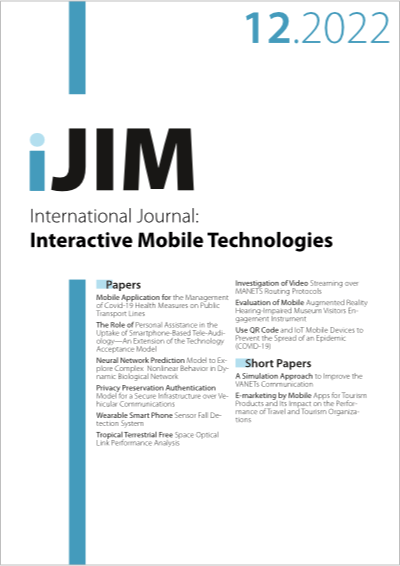Tropical Terrestrial Free Space Optical Link Performance Analysis
DOI:
https://doi.org/10.3991/ijim.v16i12.30119Keywords:
FSO; FSO Link budget; Haze attenuation; visibilityAbstract
Free Space Optical (FSO) has a very good potential alternative solution to Radio Frequency (RF) to provide high terrestrial wireless communication. In tropical region, the only drawback of FSO is atmospheric attenuation due to mainly haze and rain. This study investigates the performance of FSO system over link distances that ranges between 9 km to 12 km as the average visibility in Kuala Lumpur, Malaysia is 10 km. Two models used to predict the atmospheric attenuation, namely Kruse model and modified Kruse model. These models are valid to predict the haze attenuation for visibilities that range between 9 to 12 km. The modified/corrected Kruse model shows some limitations in the prediction of haze attenuation over longer wavelength. However, the study indicates that attenuation due to haze is low, while air quality in Kuala Lumpur, Malaysia is acceptable. As the size of haze particles varies from 0.01 to 1 µm, the longer wavelength is preferable as 1550 nm to enhance FSO performance compared to 850 nm and 600 nm wavelengths. Thus, the longer wavelength is the optimal choice to enhance the FSO performance as it caused low scattering.
Downloads
Published
How to Cite
Issue
Section
License
Copyright (c) 2022 Mohamed Hadi Hababi, N.F.A Jamal, Md. Rafiqul Islam , Ahmed Basahel

This work is licensed under a Creative Commons Attribution 4.0 International License.



